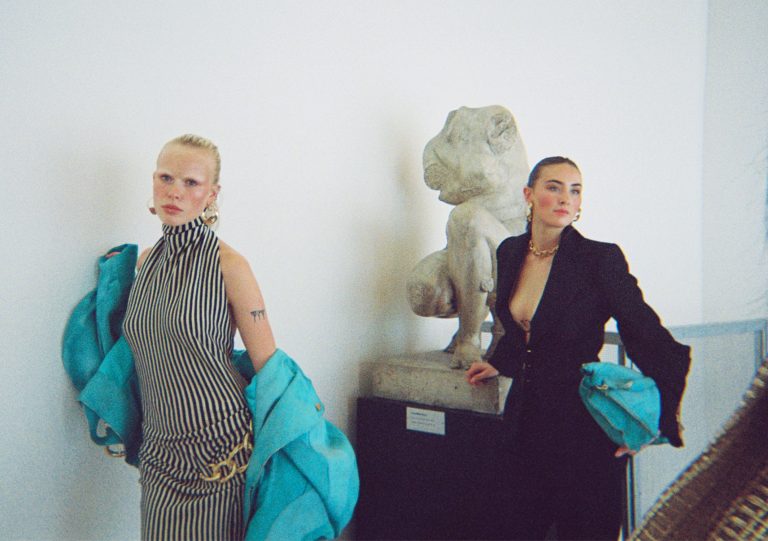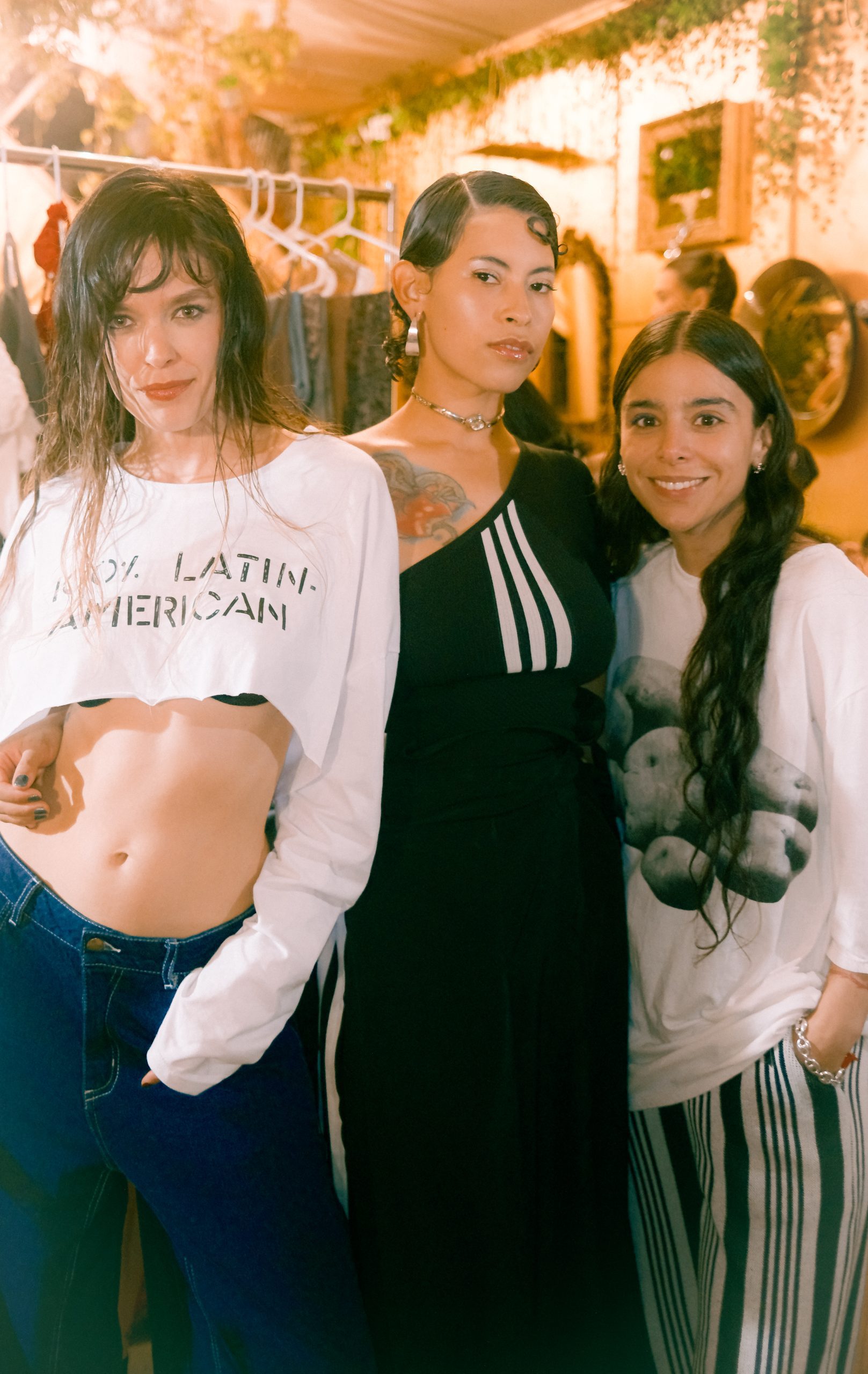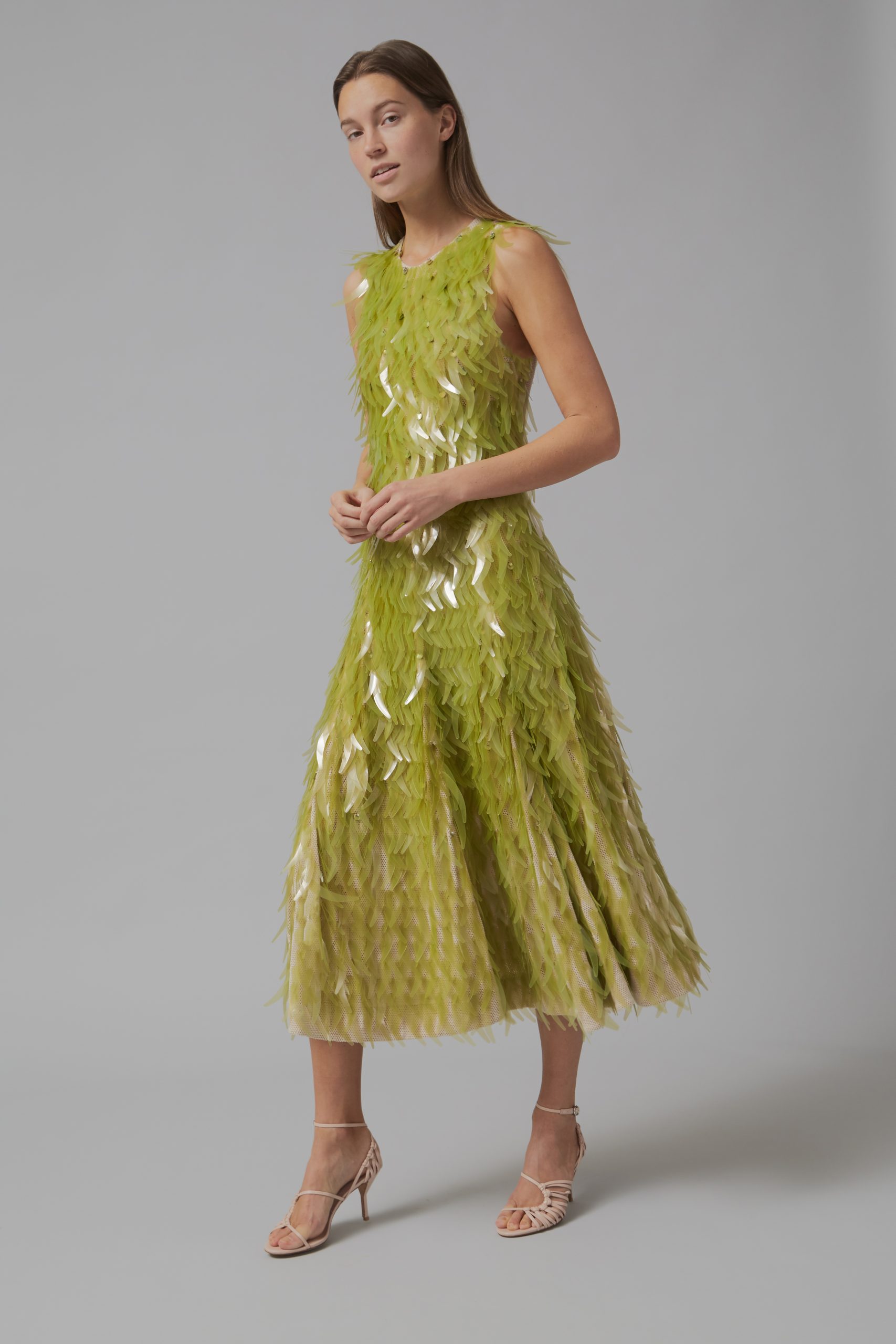In today’s dynamic fashion landscape, where mass production regularly overshadows craftsmanship, designer Flora McFarlane stands out as a defender of intentional, carefully crafted artistry. Grounded in artisanal knitwear and expert tailoring, her designs reflect the growing movement towards sustainable fashion- an ethos gaining momentum in the wake of current conversations surrounding eco-consciousness and longevity. As fashion houses like Gucci and Stella McCartney lead the charge towards more ethical production, McFarlane’s use of deadstock fabrics and heritage techniques aligns perfectly with this global shift. Recently recognised by the British Fashion Council (BFC) with the prestigious Vanguard Education Fund 2024, McFarlane is poised to bring her timeless, handcrafted designs into the spotlight, balancing contemporary innovation with a respect for tradition.
Artisanal craftsmanship, particularly in knitwear and tailoring, is at the core of your designs. What draws you to these techniques, and how do you balance the time-intensive nature of handmade work with the demands of a competitive fashion market where speediness and mass production take centre stage?
“Taking time when crafting a garment is crucial- not just for its durability, but for the integrity of the design, ensuring it retains a timeless quality. While I strive for my designs to be as contemporary as possible, I always consider their longevity, imagining them being worn even a century from now. I love incorporating iconic Scottish textiles into my work, from the intricate Fair Isle patterns to the classic cables of an Aran jumper. Much like harmonising with a traditional melody, I draw on heritage techniques that have persisted over time. My influences are eclectic, blending my passion for art history, fashion and literature, all of which shape my designs and approach to tailoring.
Sustainability is often highlighted in discussions about slow fashion. How do you integrate eco-conscious practices in your designs, and how do you hope to influence consumers’ appreciation for slow fashion?
All of my designs and collections begin with myself as the consumer, creating clothes that I would personally love to wear. As both a consumer and a young designer who has grown up with the increasing focus on sustainability, I am aware of the importance of eco-conscious practices. I find joy and satisfaction in repurposing materials, whether it’s deadstock wool, fabrics, or vintage textiles sourced from markets or eBay, turning unwanted items into something wearable and beautiful.
In every collection, I make a conscious effort to recycle, upcycle and work sustainably. For instance, I’ve used leftover leather scraps from other projects to craft bags or upholster shoes. However, I also acknowledge that some high-quality materials can be expensive. Using these materials adds longevity to garments, which is an important consideration. It’s similar to saying shop locally and seasonally- understanding the cost of quality comes from the care and craftsmanship involved in production.
Tailoring requires an eye for detail and an intimate understanding of the wearer’s needs. Can you walk me through your creative process when designing a tailored piece, from initial inspiration to the final garment?
All of my designs start with a focus on myself, as a womenswear designer at heart. I believe in the power of feeling confident and comfortable in your own skin, and for me, clothing plays a key role in that. When a garment fits perfectly and looks amazing, it brings a sense of joy and empowerment. Fittings are a vital part of my design process. From the early toiling stages to the final adjustments, comfort is a priority, and when the models feel beautiful in the clothes, I know I’m on the right track.
Next, I’d like to talk about your recent recognition by the British Fashion Council, as one of four students to receive the Vanguard Education Fund 2024. How does this recognition impact your journey as a designer, and what are your immediate goals for utilising the cash prize and global exposure?
I am truly honoured to have received this prize. It came as a surprise, especially since graduates from universities and art schools outside of London often don’t get the recognition they deserve. It is wonderful and so exciting to see my name and the work I have poured so much time, love, and emotion into gaining attention on social media.
The Mentorship aspect of this award is invaluable. How do you envision the next 12 months shaping your brand, and what specific guidance are you hoping to gain from this experience?
In essence, I believe it’s about recognising the importance of being more sustainable for the future. Today, we are all much more conscious of this and understand a good quality garment may cost a little more due to craft production, but it offers greater longevity. In a way, it’s similar to what William Morris aimed for with the Arts and Crafts movement- preserving traditional craftsmanship and emphasising the beauty of well-made, thoughtfully designed objects, while maintaining contemporary relevance.
As a designer, I always ask myself, “Would I wear what I’ve created?” If the answer is yes, I hope others will connect with my designs as well.
Written by Clara Potts a GLITCH Magazine Contributor





